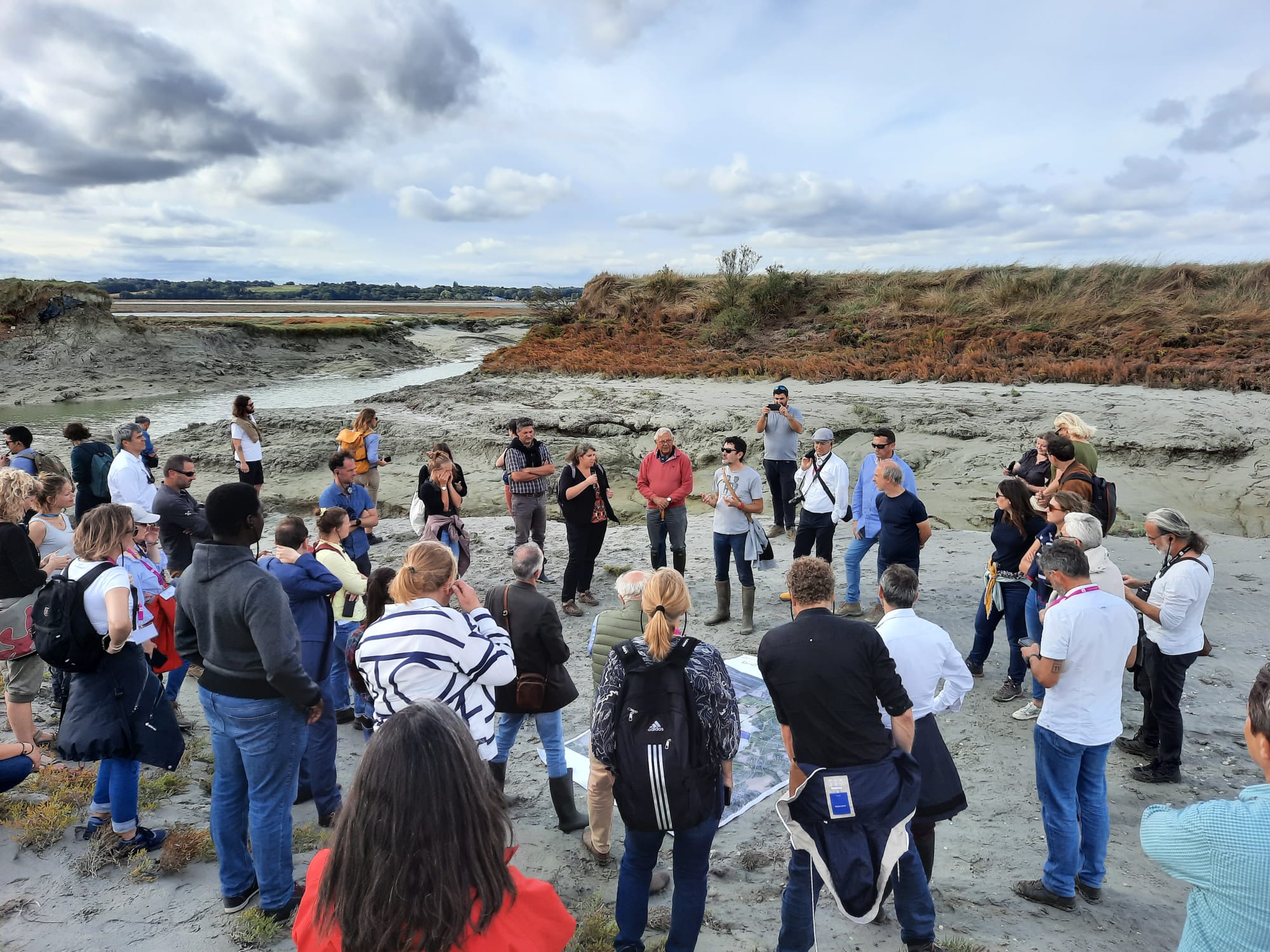From 10 to 12 October, the project meeting of "MANABAS COAST" took place and all partners came together in St. Malo in France. We look back on a very successful gathering. We worked hard together and made significant progress. There were interesting workshops, discussions, and there was also plenty of time to explore the beautiful surroundings.
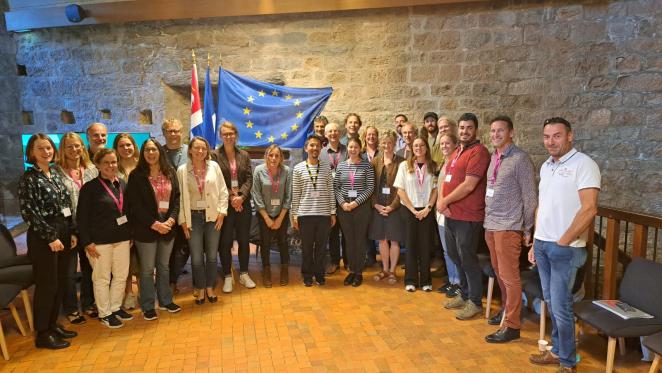
Working on the first deliverables
The teams of work packages (WPs) #1 and #2 came together before the Breizh meeting to work on their first deliverables. This pre-meeting was opened by Saint Malo’s major, who welcomed them in the mediaeval City Hall. He explained that Saint Malo has a long relation with the sea, which links to the discovery of Canada. Nowadays, the challenge for Saint Malo is to adapt to a rising sea level. To this end, the city collaborates closely with the Conservatoire du Littoral, our meeting host.
The WP #1 team worked on the six spheres that together compose the mainstreaming framework for Nature-based Solutios (NbS). These spheres includes a compelling narrative for NbS, the leading principles, enablers guidance and more. The WP #2 team came together to analyse the results from the baseline assessment. They discussed the priorities given by the pilot teams to the enablers and leading principles, and their learnings from filling out the assessment questions. They ended with group discussions in the courtyard on how to set-up transnational learning around themes like monitoring, salt marshes and nourishment. This initiative should help the pilot teams to progress from their current baselines toward better NbS pilots in each country.
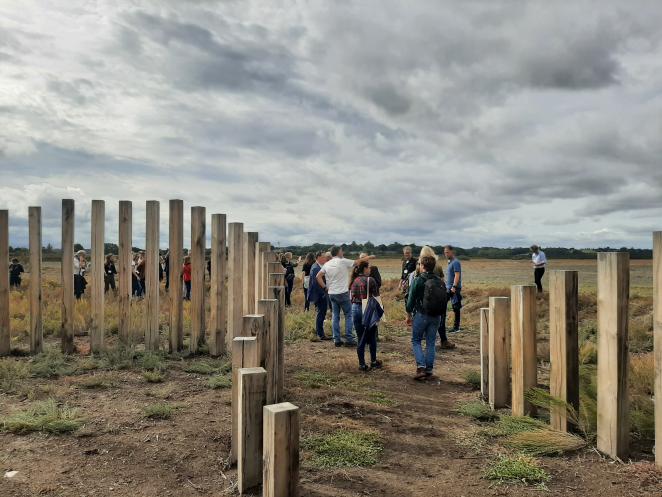
From pilots to mainstreaming
Day 1 of the Breizh meeting started off with two spotlight presentations. Luisa Rieth, who started a week ago at LKN.SH, inspired everyone with their ideas to protect Halligen Islands against sea level rise with NbS. Stanford Wilson of RWS then presented the new ResiRiver project, our sister project under Interreg NWE with a focus on NbS for river systems.
The first workshop in the meeting was about making the step from NbS pilots to mainstreaming. To make this step we have to agree on what we mean when we say NbS, mainstreaming or upscaling. The first ideas for this came from a literature review by HZ. These ideas were further developed in groups during the meeting. These discussions taught us to talk with different levels of wording, which should fit to the capacities of our stakeholders. As a project we have a lot of knowledge, but the knowledge about how to communicate to stakeholders is also important.
Working on the baseline and framework
The second workshop started with a recap from the pre-meeting of the WP teams. Per Sørensen (DCA), WP #2 lead, presented the first results from their analysis of the baseline assessments. Jurre de Vries (RWS), WP #1 lead, took us through the spheres of the mainstreaming framework. Four out of the six spheres were filled during the pre-meeting. In this workshop, we filled the remaining two spheres, being the ‘pilot experience & lessons learned’ and ‘technical guidance and tools’. This exercise was highly productive in that a lot of input (tops, but also flops) was collected on visuals of the framework.
We ended the day with an exploration of the walled city of Saint Malo and its beaches. Our guide for this walk was Gwenal Hervouët (CdL), who turned out to be not just an NbS expert – but also an expert on local history.
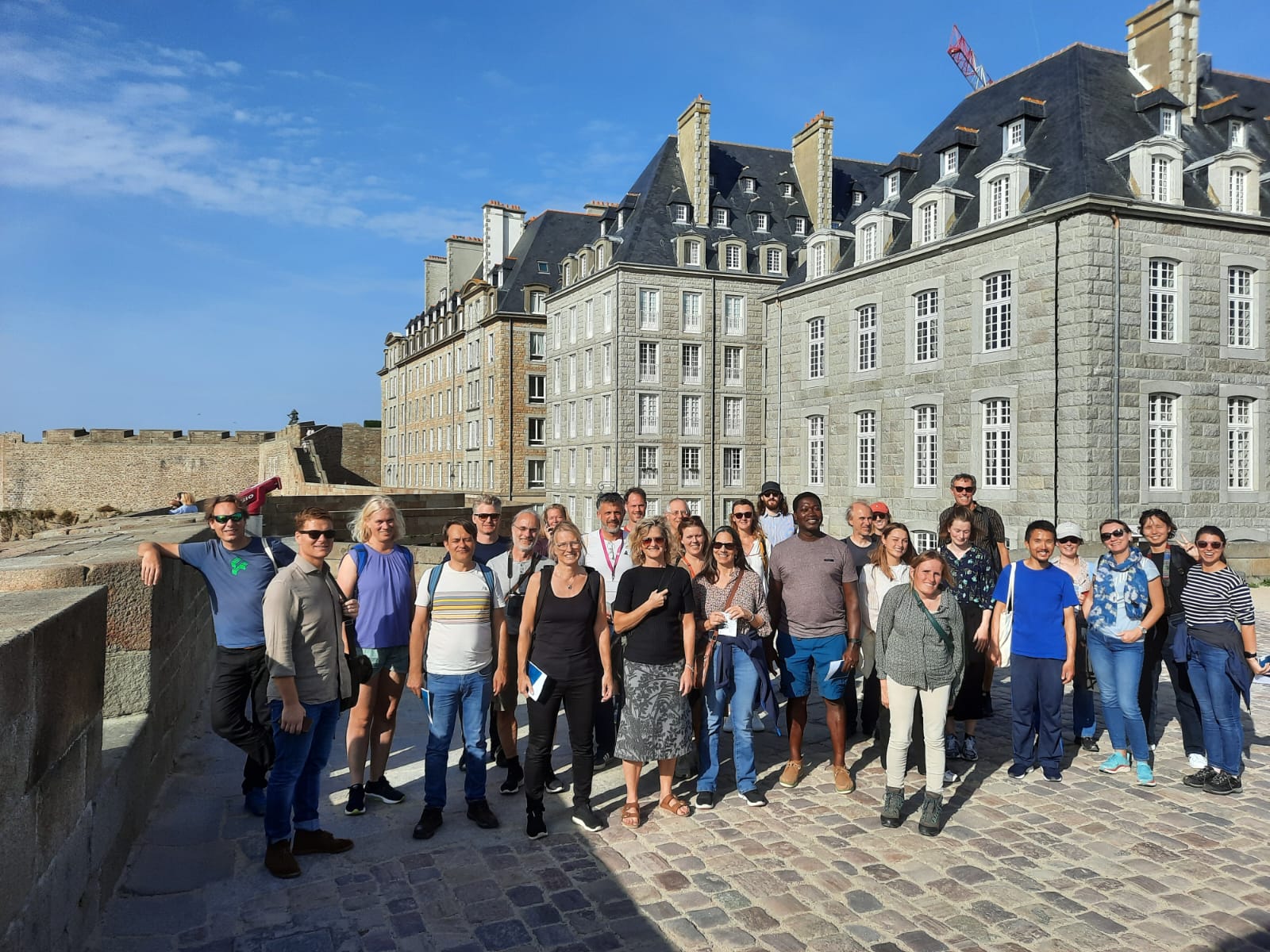
Transnational exchange with French stakeholders
Day 2 of the Breizh meeting was dedicated to the exchange of joint experiences with mainstreaming NbS. This transnational exchange took place in the event center of Beaussais sur Mer, where almost 80 project partners and French stakeholders came together. After a warm welcome by the local major and CdL director, Quirijn Lodder (RWS) kicked off the event. He asked everyone to put on their enabler glasses today: “What can we do, what did we learn and how can we inspire others?” To answer these questions, NbS pilot leads from different countries presented their experiences with implementing NbS. The solutions presented included managed realignment in the Saâne valley (FR) and Western Scheldt (NL/BE) and foreland management in Lower Saxony (DE).
Overcoming barriers for mainstreaming NbS
MANABAS Coast wants to go beyond NbS projects. A panel discussion, therefore, addressed the main question: How can we overcome the barriers for mainstreaming NbS? The panel consisted of NbS pilot leads and French stakeholders. Pierre-Edouard Guillain (Ministry) called for a national strategy to manage the changing French coastline. Part of this strategy should be the acceptance to move the shoreline landward in some places. According to Antoine Collin (PSL) the authorities should work together with scientists to build this acceptance. The general public is not aware of all the services that NbS can provide. Therefore, sociologists can help to engage stakeholders and explain that NbS are better than traditional grey solutions. Following upon these ideas, the NbS pilot leads explained how they have been working together with stakeholders to build trust. A good example is the 8 Fjords pilot, where the County and the Swedish Geotechnical Institute have jointly visited farmers to learn about and address their worries about NbS.
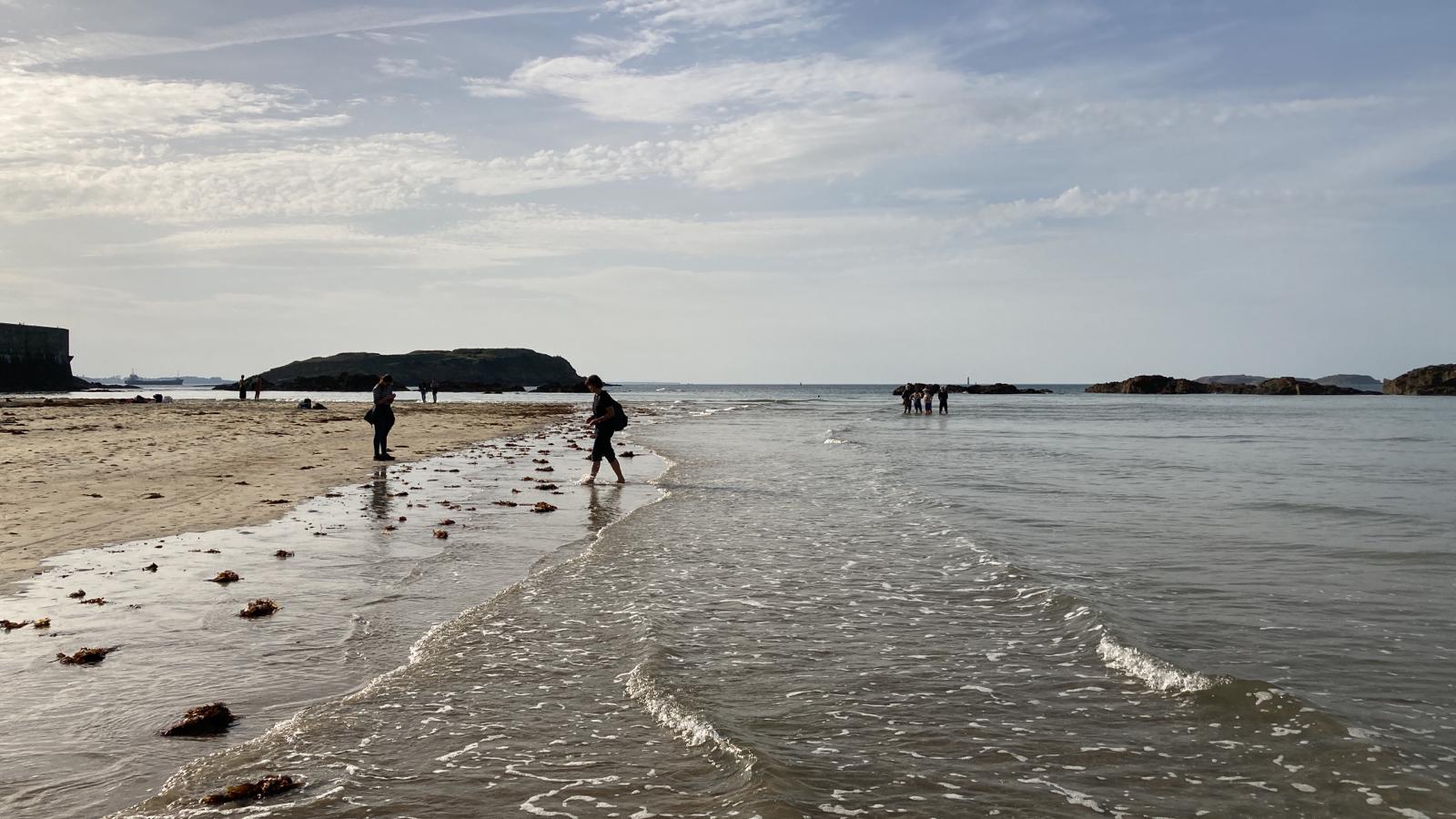
Exploring the Bay of Lancieux
The Breizh meeting ended with a study visit to the Bay of Lancieux. For this bay, the Conservatoire is working on a strategy to adapt the polder to rising sea levels. They adopt the strategy development as an opportunity to question the way to interact with the bay. Key questions are: What type of habitat, what relationships, access and uses can be maintained into the future? Gwenal Hervouët (CdL) explained to the group how CdL is taking on these questions. The final choice between a grey solution (dike strengthening) or NbS (a smaller inner dike) will be up to the local government.
